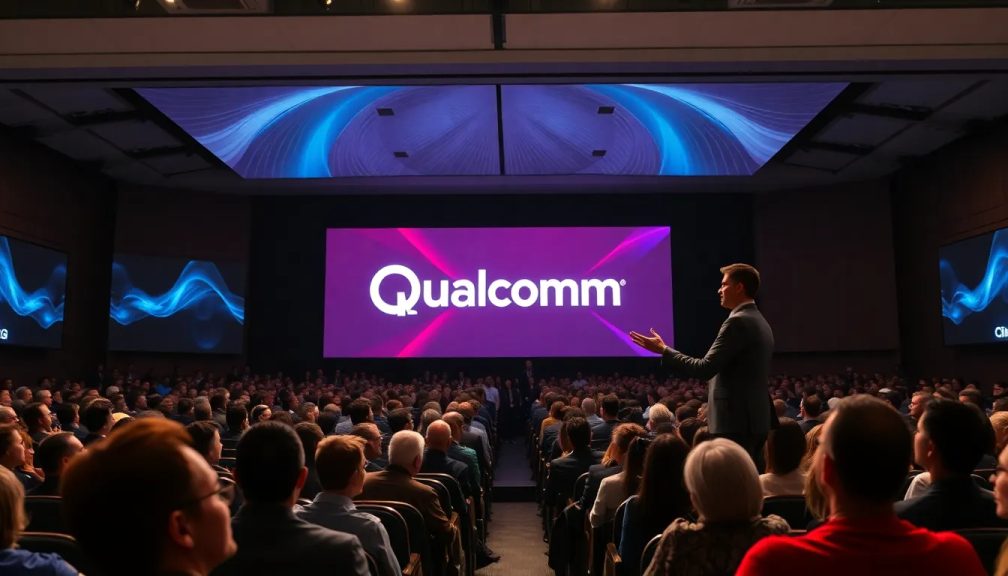Qualcomm announces 6G and ChromeOS updates at Snapdragon Summit

At the recent Snapdragon Summit, Qualcomm has taken a bold step into the future of mobile technology, revealing ambitious plans for 6G and the integration of ChromeOS and Android. This conference, celebrating a decade of Snapdragon advancements, set the stage for a transformative journey in mobile computing, where artificial intelligence (AI) will play a pivotal role.
As we delve into the highlights of this event, it's essential to grasp not only the technical specifications but also the broader implications these innovations hold for consumers and the technology landscape at large.
Qualcomm's Vision for the Future of Mobile Technology
Qualcomm's CEO, Cristiano Amon, introduced what he termed a “new phase of Snapdragon,” emphasizing the mantra of “AI everywhere.” This vision encapsulates the company's strategy to weave AI into the very fabric of mobile devices, enhancing user experience and functionality.
Amon announced that the next-generation 6G technology is projected to be ready by 2028. This advanced connectivity promises to revolutionize how devices communicate and process information, paving the way for smarter, more interconnected ecosystems.
The integration of AI into mobile technology is not merely about faster processing speeds; it also involves creating an intuitive user interface that adapts to individual needs. Amon stated, “AI is the new UI,” highlighting the shift towards more personalized interactions with technology.
Understanding 6G Technology: What to Expect
As the successor to 5G, 6G technology is set to redefine connectivity. Here are some key expectations regarding 6G:
- Enhanced Bandwidth: 6G is expected to offer significantly higher data transfer rates, enabling seamless streaming and real-time communication.
- Low Latency: With minimal delays, 6G will support applications requiring instant feedback, such as remote surgery or augmented reality experiences.
- Wider Coverage: The technology aims to connect devices in rural and remote areas, bridging the digital divide.
- Intelligent Network Management: 6G will utilize AI to optimize network performance, ensuring efficient data distribution.
The expectation of having “pre-commercial devices” by 2028 suggests that Qualcomm is not only planning for the future but actively working to make it a reality sooner rather than later.
AI Integration: The Ecosystem of You
One of the most intriguing aspects of Qualcomm's presentation was the concept of an “ecosystem of you.” Amon explained how devices such as smartwatches, glasses, and even vehicles will evolve to interact seamlessly with smartphones, leveraging AI for enhanced functionality.
These devices will act as agents, collaborating with the smartphone’s AI to manage tasks efficiently. For instance:
- Smart Glasses: Could recognize individuals and provide relevant information or alerts directly to the user.
- Smart Rings: May track health metrics and offer suggestions based on physiological data.
- Voice-Controlled Assistants: Will facilitate hands-free interaction with various devices, optimizing user experience.
Amon emphasized that as AI technology progresses, the models used will also adapt, creating a tiered system designed to allocate tasks effectively between the cloud and edge devices.
Collaboration with Google: A Unified Computing Experience
In a pivotal moment during the summit, Rick Osterloh, Google’s senior director of devices and services, discussed the potential merger of ChromeOS and Android. This initiative aims to create a unified technical foundation for personal computing, enhancing user experience across devices.
Osterloh highlighted that historically, there have been significant differences in the operating systems for PCs and smartphones. By combining these systems, users can expect:
- Smoother Transition: Switching between devices will be more fluid, with applications and services functioning seamlessly across platforms.
- Expanded Functionality: Users will benefit from the collective advancements made in both ecosystems.
- Enhanced AI Capabilities: Integrating the AI stack from both platforms will lead to more powerful and versatile applications.
This collaboration, referred to as “Project Aluminium,” suggests a significant shift in how users will interact with their devices in the coming years.
Implications for Developers and Consumers
As Qualcomm and Google push the boundaries of mobile technology, the implications for developers and consumers are profound. Developers will need to adapt to a new landscape where:
- Cross-Platform Development: Skills in both Android and ChromeOS will be essential to create applications that run seamlessly across devices.
- AI Proficiency: Understanding AI frameworks and models will become increasingly important as applications leverage AI for enhanced functionality.
- User-Centric Design: Developers must focus on creating intuitive interfaces that leverage AI to personalize the user experience.
For consumers, these advancements promise a future where technology is more integrated into daily life, providing a more personalized and efficient experience. Imagine your devices anticipating your needs, managing your schedule, and even assisting in decision-making processes.
As these innovations unfold, it will be fascinating to observe how they shape the future of technology and everyday life.
For those interested in a deeper dive into the Snapdragon Summit's revelations, you can check out the recap in this video:
In conclusion, Qualcomm's announcements at the Snapdragon Summit highlight a future rich with potential, where AI and advanced connectivity converge to redefine how we interact with technology. As developments continue, the tech community eagerly anticipates the next steps in this exciting journey.




Leave a Reply